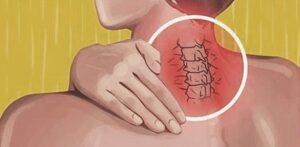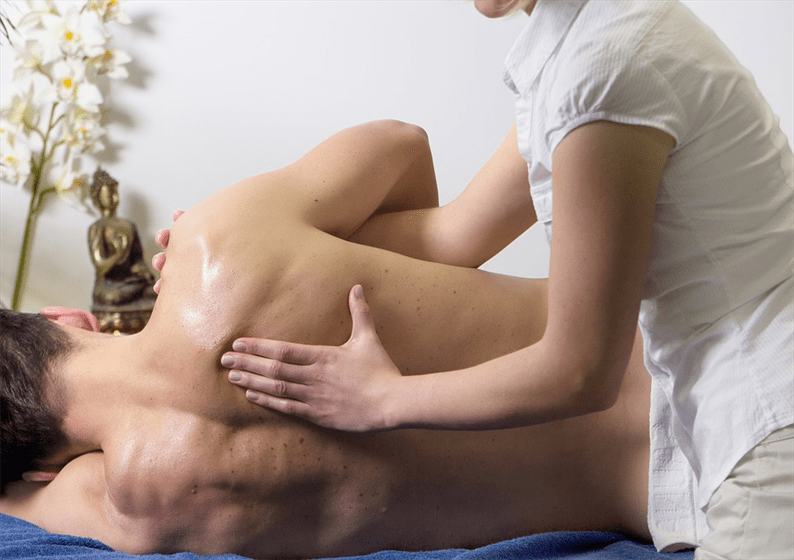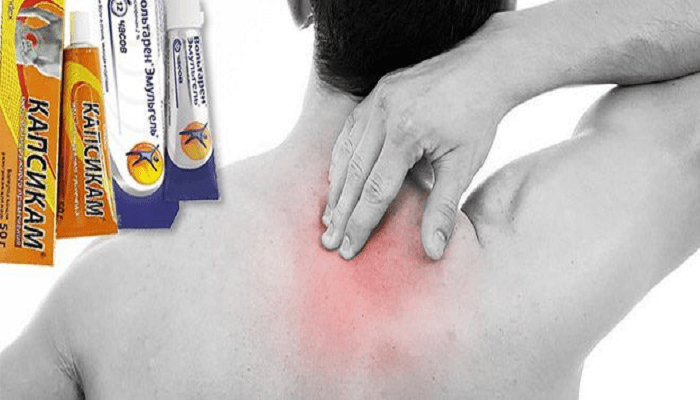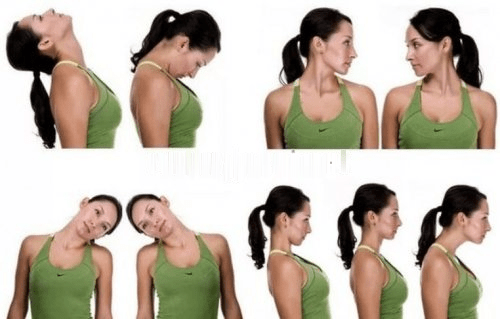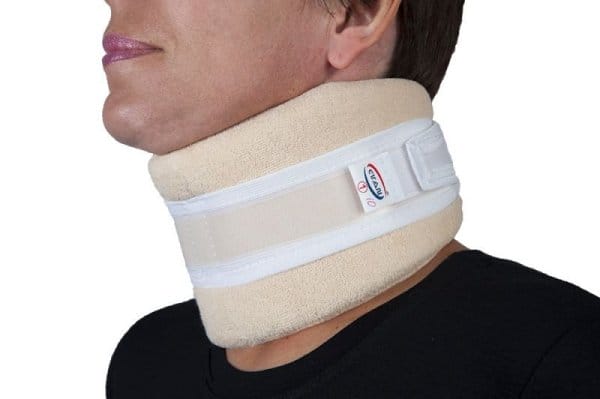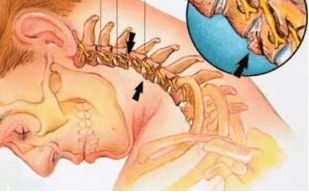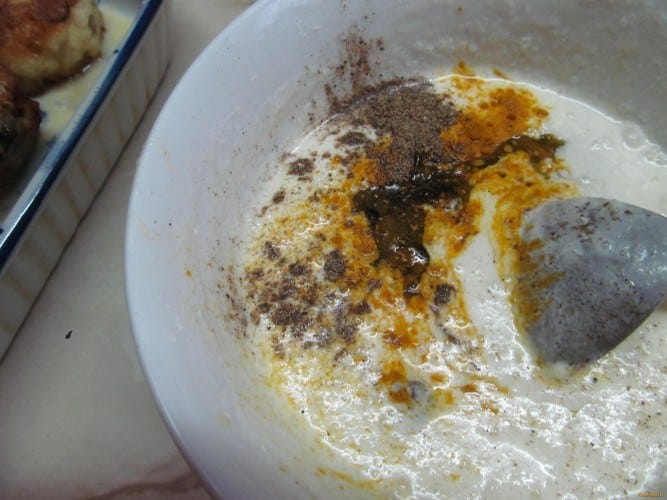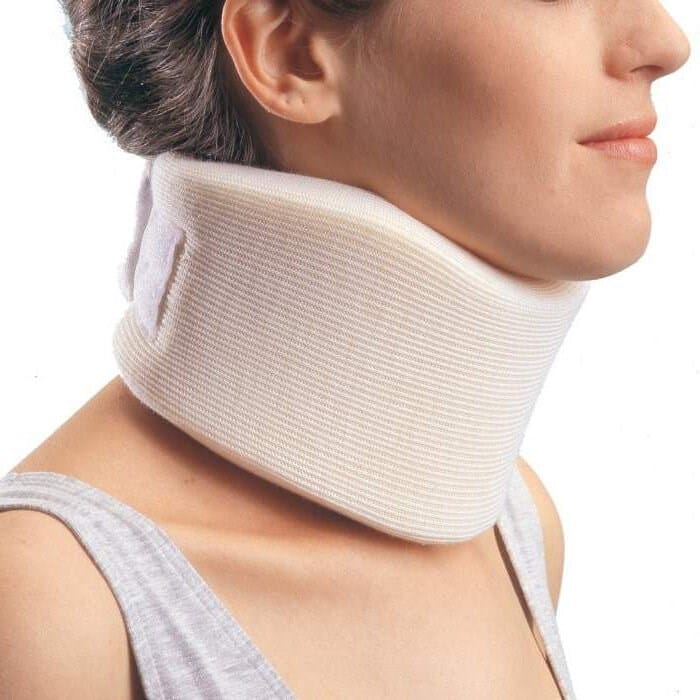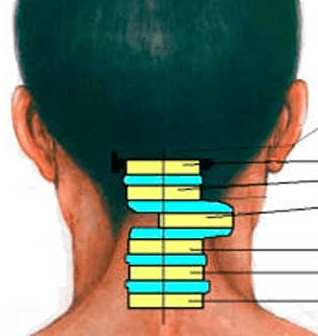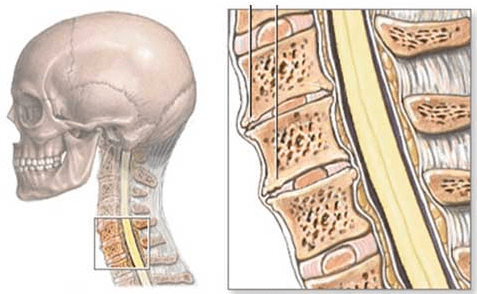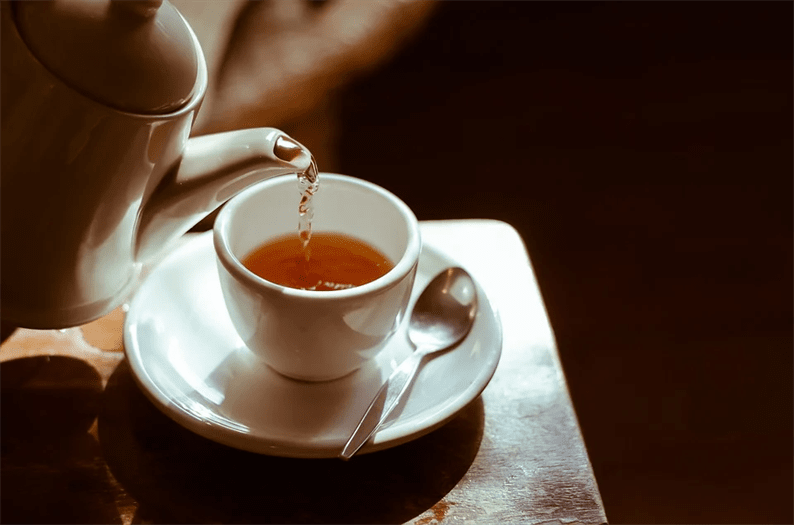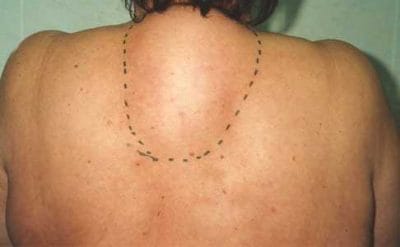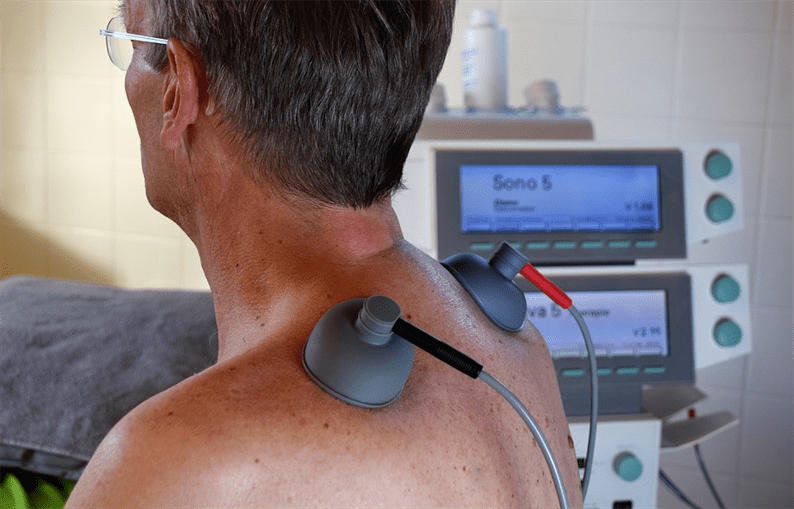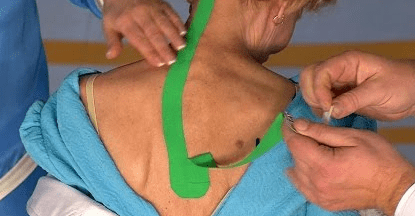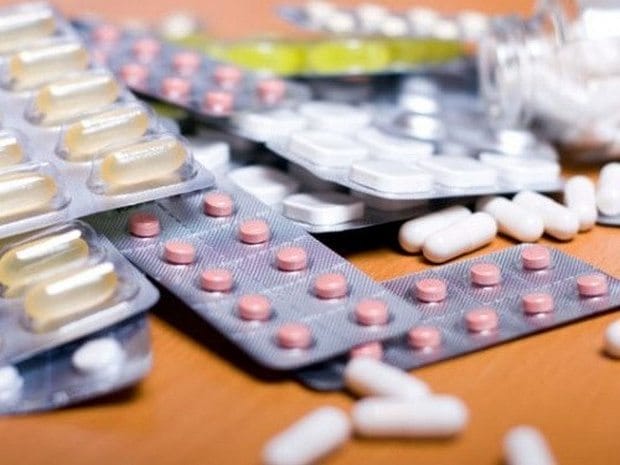Neck hurts: common causes, symptoms, diagnosis, treatment. Neck pain: causes and ways to get rid of an acute problem
When neck pain is really dangerous
Pain in the neck area can be a sign of an autoimmune disease, malignant neoplasms, inflammation, pinched nerve, ailments associated with blood vessels, and spinal cord injury.
What are three key symptoms that might indicate this?
- The feeling of discomfort or pain in the neck area does not go away for at least a few days.
- The discomfort is growing.
- There is at least 1 “aggravating factor”:
- age group over 55 or under 20;
- increasing painful sensation when tapping;
- fever, nausea, general malaise;
- weight loss;
- systematic headaches;
- stiffness in elementary movements;
- numbness, tingling, weakness in the upper or lower extremities
If you check all 3 of the above points, it makes sense to make an appointment with your therapist as soon as possible. The doctor will prescribe a test and, probably, will write out a referral to narrow specialists for an accurate diagnosis.
Another obvious situation when pain cannot be ignored: if a person was involved in an accident, fell from a bicycle, ski, snowboard, or was injured in another way, and sharp pain in the neck appeared immediately after this event.
Inflammation of the lymph nodes
In this case, it is not the neck that hurts, but the accumulation of lymphatic cells. Enlarged lymph nodes are a symptom that the body is fighting an infection localized in the neck and head.
This is usually seen with colds (flu, SARS, ear infections). Sometimes the cause of inflammation of the cervical lymph nodes can be progressive caries, beginning measles, weakening of the immune system, HIV.
Only a qualified doctor is able to identify the cause.
What to do if your neck hurts
The lion’s share of neck problems are associated with muscle tension pains or worn joints. In this case, no special treatment is required. The discomfort goes away after a few days.
You can relieve pain in this way:
- Take a pain reliever – aspirin, ibuprofen, paracetamol.
- Place an ice or frozen food bag wrapped in a towel around your neck. You can practice cold in the first 2-3 days of pain.
- If the problem persists after 2-3 days, moist heat will relieve the condition: a hot shower or a towel soaked in hot water, which is applied to the neck.
- Exercises to gently stretch the neck muscles and activate blood circulation. Attention! Exercise is highly not recommended for acute pain or the likelihood of a disease of the cervical spine (pinched nerve, hernia).
Osteochondrosis
Cervical osteochondrosis, among others, accounts for 25% of cases. Disorders in the spine also lead to changes in the adjacent tissues and muscles. Their nutrition is disturbed due to degenerative processes in the vertebrae. The paravertebral nerves are also affected. All this provokes severe neck pain.
However, the pain is not always felt, but with an exacerbation. To exacerbate it, an uncomfortable posture in a dream or an awkward turn of the neck and body is enough.
Hypothermia
A common situation when you slip through in transport or at home. Some people just need to walk through bad weather with an open neck. And almost the next day, pain in the cervical spine begins to torment.
Also, muscles that are closely located are inflamed. The shoulder may ache, there may be stiffness in the upper thoracic back. Prevent muscle cooling whenever possible.
Injury
You don’t have to be seriously injured to damage your neck muscles. Even an awkward sharp turn can cause micro-trauma in the muscles. Inadvertent bending can also pinch a nerve. In this case, the pain will be burning and sharp.
If the nerve becomes inflamed, the pain persists for a long time. A certain position of the head and neck has to be chosen in order to reduce pain.
If there is a sports or household injury, get to the doctor as soon as possible. X-rays will determine if there is a vertebral fracture. In this case, neck movements should be completely eliminated. The doctor will determine the treatment measures.
In addition to the fracture, the option of muscle stretching or rupture of tendons and ligaments is possible. In any case, self-medication is excluded.
Stress pain
Stress causes muscle spasm in the head and neck area. Muscle tension lasts up to several days. That, simultaneously with vasospasm, contributes to the fact that pain occurs.
The pain in the neck will not be as severe as the headache. But tension will still cause discomfort along with pain in the occipital region.
Reinforced bandage with strong fixation
Has a special splint inserted into the bandage. Helps stabilize the cervical segment and reduce pain.
Indications for the use of the bandage:
Myositis
Decreased muscle tone
Vertigo treatment
With exacerbations on long trips
After strokes
Excessive mobility of the vertebral bodies
Muscle tension when working in a forced position
Shoulder fatigue
The selection takes place along the neck circumference and height. The patient needs to wear the bandage as long as recommended by the doctor.
Medium fixation bandage on the neck
The bandage is made of special polyurethane foam that holds its shape. Allows to reduce the load on the neck.
Recommended in the following cases:
Complex headache therapy
Pain in the cervical spine
Dizziness
Myositis
After manual therapy
When working at a computer
After injuries
Muscle hypertonicity and hypotonia
High mobility of the vertebrae
Radicular syndrome
Protrusion in the cervical spine
After strokes
Simultaneously with massage
While the bandage is put on a person, the weight of the head falls on him. The muscles of the neck rest during this period. Since the bandage takes the load from the cervical segment onto itself.
Why does pain occur?
The most common reason why your neck hurts is poor posture. With a stooped back, the head ceases to occupy a position exactly above the body and moves forward. In this position, the muscles and ligaments of the neck experience increased tension. The development of stoop and neck pain is facilitated by prolonged work without changing position, sleeping on a soft bed or high pillow, prolonged static load.
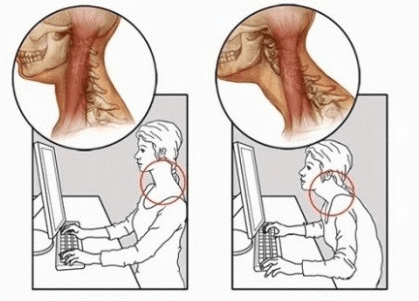
The main cause of neck pain is prolonged static tension in the wrong posture.
Other causes of neck pain are an injury from falling headfirst, in a traffic accident, or while playing sports. With a sharp acceleration and then braking, the cervical spine makes a whiplash motion. As a result, ligaments and muscles can become overstretched, a displacement or compression fracture in the cervical vertebrae, and the formation of intervertebral hernias can occur.
Neck pain can occur as a secondary manifestation of other diseases. For example, with a heart attack, when a heart attack causes severe pain, radiating along the nerve plexuses to the upper limbs, chest, neck. Neck pain with a heart attack is only part of a large complex of symptoms – shortness of breath, sweating, nausea, vomiting. If the neck, jaw hurts and other signs of a heart attack are observed, you should immediately call an ambulance.
Neck pain is also used as a diagnostic sign of meningitis. With this disease, the muscles of the neck become hypertonic, that is, they become rigid. When you try to tilt your head to your chest, the back neck hurts badly.
The spine in the neck area hurts with rheumatoid arthritis, osteoporosis, fibromyalgia, spondylosis and osteoarthritis, hernia or protrusion, with compression of the nerve roots or spinal cord with infectious edema, abscesses, tumor or benign neoplasms.
Degenerative diseases
Osteochondrosis, or, in other words, dystrophic disorders in the intervertebral discs, leads to the fact that a person’s neck constantly hurts. This is usually a mild aching pain, which is often accompanied by a feeling of numbness and aches in the shoulder girdle and head.
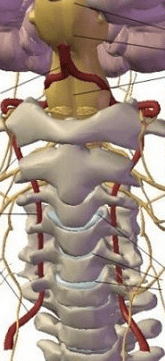
Osteochondrosis of the neck causes prolonged aching pain and the development of vertebral artery syndrome
The collar zone affected by osteochondrosis can cause the development of cerebral artery syndrome. With a decrease in intervertebral distances in this area, a compressive damage to the vertebral arteries occurs, passing in the openings of the transverse processes of the cervical vertebrae. Pressure on the vessel causes a decrease in blood flow to the brain with the onset of dizziness, decreased vision and hearing. On the other hand, mechanical stimulation of the artery with pressure from the vertebrae causes a reflex spasm, which manifests itself as a burning throbbing pain in the head.
Treatment
Treatment of pain in neoplasms is aimed primarily at eliminating the cause – reducing or removing the swelling. For this purpose, chemotherapy and radiation therapy, hardening of the vessels feeding the tumor, and surgical removal of the pathological formation are used.
Pain relief depends on the severity of pain:
- weak drugs: Paracetamol, Metamizole sodium, Diclofenac, Etodolac, Piroxicam, Meloxicam, Mefenamic acid. To enhance the effect, aminazin tablets are added, which potentiates the analgesic effect;
- pain relievers of moderate severity: injections of Ketorol, Ketanov, a combination of Analgin with Diphenhydramine (Sibazon) and Papaverine. For bone pain – Meloxicam, Piroxicam, Ksefokam, bisphosphonate preparations;
- with increasing pain, they switch to weak opiates – Tramadol, Codeine;
- with severe pain, analgesia is possible only with the help of opiate drugs – Morphine, Buprenorphine, Fentonil. To enhance the analgesia of neck pain in neoplasms, antipsychotics (Droperidol, Galaperidol), anticonvulsants (Diazepam), corticosteroids (Prednisolone, Dexamethasone) are used.
Note!
Neck pain can occur for a variety of reasons. In order not to miss serious illnesses, it is necessary first of all to visit a doctor for consultation about the occurrence of pain and the exact determination of its source.
Causes of front neck pain
Discomfort can be localized directly under the chin, in a limited area, but more often severe diffuse pains disturb. Soreness increases with swallowing, turning the head, squeezing the neck with the collar of the shirt. Neck pain is caused by:
- Thyroid pathologies: acute and subacute thyroiditis, diffuse toxic goiter, Hashimoto’s thyroiditis.
- Injuries: sprains and breaks of muscle fibers, blows to the neck.
- Inflammatory processes: myositis, neuritis, tendinitis.
- Purulent diseases: festering cervical cyst, paratonsillar abscess.
- The defeat of lymphoid formations: lymphadenitis, lymphangitis.
- Cervical compression syndrome: radicular, vertebral artery.
- Diseases of adjacent organs: esophagitis, tracheitis.
- Angina attack.
Causes of side neck pain
Intense pain along the side of the neck usually radiates to the shoulder or ear. A person may feel tingling, burning, throbbing in this area. With severe discomfort, secondary torticollis is formed, in which the head is constantly tilted to the diseased side, and the chin is turned to the healthy one. The most common reasons why side neck pain occurs:
- Blood vessel pathologies: varicose veins of the neck, atherosclerosis of the large cervical arteries that feed the brain.
- Staying in an uncomfortable position: constantly tilted head when working at a computer, poor pillow for sleeping, peculiarities of gait with the neck tilted to the same side.
- Muscle spasms: with a sharp turn of the head, intense physical exertion, after hypothermia.
- Retropharyngeal abscess.
- Oncological diseases: neoplasms of the thyroid and parathyroid glands, tumors of the lateral surface of the pharynx and larynx.
- Congenital diseases: Grisel syndrome, pterygoid neck with Shereshevsky-Turner anomaly.
- Rare causes: complications after subarachnoid hemorrhage, meningitis.
Diagnostics
A person who has a sore neck most often consults an osteopath or neurologist. The examination is long and complex, for the correct diagnosis it is necessary to exclude many causes of neck pain. Diagnostic search involves the use of laboratory and instrumental methods aimed at visualizing the affected area and searching for signs of concomitant diseases. The most informative are:
- Sonography. Ultrasound of the neck and other parts of the body is used for rapid non-invasive imaging of all cervical structures, identifying signs of pathology of internal organs that can provoke neck pain. A targeted ultrasound scan of the thyroid gland, submandibular salivary glands is performed. Duplex scanning helps to assess the state of blood flow in large vessels.
- X-ray imaging. Plain radiography of the SHOP is used to detect deformities of bone structures, displacement of the vertebrae, in which the neck always hurts. A more informative method is CT of the spine, which allows you to assess the nature and degree of vertebral disorders. MRI is recommended to study the ligamentous apparatus.
- Functional diagnostics. The appearance of pain in the neck can be caused by damage to the muscular apparatus, therefore it is advisable to perform electromyography. If a radicular pain is suspected, electroneurography is indicated. To detect cervical kyphosis, a Forestier test is required. The degree of pain syndrome is determined using the McGill questionnaire.
- Laboratory Methods. General and biochemical blood tests are required to exclude acute inflammatory processes, in connection with which the neck may hurt. The concentration of thyroid hormones must be determined. In the presence of a general infectious syndrome, bacteriological culture of sputum or throat smear, serological tests (RIF, ELISA, PCR) are performed.
If the patient has pain not only in the neck, but also in the throat, an examination by an otolaryngologist is necessary. With intense pain syndrome, especially in elderly patients or with a history of heart disease, an ECG is recorded to exclude atypical forms of angina pectoris and myocardial infarction. For serious spinal injuries, accompanied by sensitivity disorders or paresis, myelography is performed to assess the condition of the spinal canal.
Physiotherapy
To eliminate muscle tension, due to which the neck hurts, use a Shants collar, which is recommended to be worn for 2-3 weeks. The neck hurts less after local thermal procedures – mud baths and compresses, electrophoresis with anesthetics. To restore the anatomical position of the vertebrae and discs, manual therapy techniques are useful. Magnetic therapy and acupuncture help to reduce chronic pain in the neck. After the acute pain subsides, massage sessions begin, while physiotherapy must be supplemented with exercise therapy methods.
Causes of pain
Neck pain when turning the head is a common unpleasant condition that affects people of all ages. It usually occurs in the vertebrae of the cervical spine and radiates to the head or shoulder girdle. May be accompanied by a feeling of stiffness, tightness, aches. Pain syndrome appears for a variety of reasons.
The main ones are:
- Osteochondrosis. The inflammatory process and degenerative changes in the bone tissue cause the development of pain syndrome. The unpleasant sensations are aggravated by turning the head or bending over.
- Mechanical impact on the neck. Even seemingly mild falls, bruises or sharp turns can cause deterioration of the ligaments, muscles and soft tissue damage, which leads to pain in the neck. It usually worsens when bending over from the side where the injury was.
- Radiculitis. Acute neuralgia manifests itself mainly in the morning and does not allow getting out of bed normally. In addition to pain, the patient feels tingling in the upper limbs, as well as slight numbness.
- Violation of sleep hygiene. If the mattress and pillow are not chosen correctly, then in the morning a person feels an unpleasant pain in the neck. It may be accompanied by stiffness on one side only and gradually disappear during the day.
- Irregular physical activity. When you have to carry a lot of weights with one hand or the backpack is too heavy and you have to carry it up the hill for several hours, then after such tests, a sharp pain in the neck often appears. It can be a signal of muscle injury in this area.
- Insufficiency of the vertebral artery. In addition to pain when turning, the patient observes such unpleasant symptoms as ringing in the ears, frequent darkening, fainting or loss of speech. The main symptom appears due to acute circulatory disorders and oxygen supply to the brain.
- Autoimmune diseases. Often, neck pain appears as a result of the development of pathological processes in the tissues of the spine. It could be lupus erythematosus or rheumatoid arthritis.
In many patients, the neck hurts when turning the head with endocrine disorders, the development of a tumor in the body, or against the background of infectious processes. In this case, discomfort is not the main symptom, but only accompany other signs of the disease. Why the neck hurts when turning the head, it is impossible to say with high accuracy, because each person may have individual reasons. Discomfort and tightness may appear against a background of stress or a nervous breakdown, in which case it will be localized in different parts of the body.
First aid for pain
If it hurts a person to turn his head, then first of all he is assigned complete rest and taking painkillers (“No-shpa”, “Diclofenac”, “Ibuprofen”). The patient is recommended to lie on a flat hard surface, place a roller or an orthopedic pillow under his back. In case of suspicion of injury, the neck is fixed with a corset. It is strictly forbidden to carry out heating procedures, massage or other physiotherapy without consulting a doctor.
Immediate medical attention is required in the following cases:
- Visible mechanical damage.
- It is not only painful for the patient to turn his head, but also there is a sharp decrease in hearing, vision, speech impairment.
- An increase in body temperature above 38.7 C.
- Neck discomfort is accompanied by dizziness and vomiting.
- High pressure is observed.
- Leaning forward causes piercing pain.
The specialist can choose the appropriate treatment tactics only after taking the anamnesis and carrying out a number of hardware techniques. In some, pain is observed after being in a draft or with a sharp turn of the head, in others only a syndrome of developing pathologies.
Pain is often caused by a compressed vertebral artery.
Physiotherapy
Pain management does not end with taking painkillers, they only allow you to forget about the problem, and not solve it. If a person’s acute period has passed and, in general, the condition is not disturbed, he is recommended to do a number of exercises at home, which will improve blood circulation and become an excellent prevention of recurrence of the problem.
The following approaches are helpful:
- Head tilts in different directions alternately.
- Circular movements of the neck, smooth with breath control.
- Throwing the head back as far as possible with the chin up.
- Raising and lowering the shoulders in turn.
Exercises are done slowly, without sudden movements, when tilting to the right or left, the main emphasis is on sensations, if pain is felt, the lesson stops or the amplitude decreases. During the period when the patient’s neck does not turn at all, exercise therapy is not performed or performed by a medical professional.
ethnoscience
When joints or neck hurt, not everyone goes straight to the doctor. Many people first use recipes that are widely popular among the people. Most of them are safe and harmless to health. Applications are good for pain on either side of the neck, they are made from the following products:
- Cabbage leaf. It must be kneaded well and applied to the sore spot.
- Elderberry tincture. It is impregnated with a gauze bandage and applied to the neck, you can replace the impregnation with pure vodka or infusions of lilac, horseradish.
- Potatoes. Fresh tubers are peeled and rubbed on a coarse grater. After that, they are mixed with honey and applied to the right or left of the neck, depending on where it hurts. The method is safe, therefore it is suitable even for a child.
- Sand. It is heated with an iron through a cloth and applied for a while. You can replace it with salt or small cereals. The main thing is that the constituent component retains heat well.
If the neck hurts after the person unsuccessfully turned his head, this is not a reason to panic. It is worth using one of the listed ways to relieve discomfort. But for chronic episodes that recur from time to time, self-medication can be dangerous.
General characteristics of pain syndrome
A pinched neck is a pathological condition in which turning and tilting the head is accompanied by severe pain. The sensations can persist for a long time, aggravated by reflected pain in the back, shoulders and arms. The nature of the pain is often asymmetric, intensely expressed on only one side. Soreness increases with palpation or turning the head.
The characteristic behavior when pinched is to turn the head with the body.
Pain in the cervical spine (cervicalgia) is a signal of a negative process affecting the body from the inside or from the outside. Pain syndrome develops in response to a number of stimuli, among which are:
- physiological factors;
- some inflammatory and degenerative-dystrophic diseases.
Unpleasant sensations can be nociceptive and neuropathic in nature. The type of pain is determined by the provoking factors.
Ointments and compresses
Since the source of pain during physiological pinching is increased muscle tone, the main aspect of treatment is relaxation of tense muscle fibers. It is recommended to use warming or cooling ointments and compresses as a local remedy.
You can buy such funds at a pharmacy or make yourself.
Cooling agents reduce the activity of nociceptive receptors that are responsible for pain.
There are several gels, creams, and ointments that can be used for home treatments. These include:
- balm Asterisk;
- Capsicum;
- Finalgon;
- Apizartron;
- Reparil gel;
- Refit;
- camphor ointment.
External mild remedies help restore normal blood flow, reduce swelling and relieve feelings of stiffness. Apply them 2-3 times a day, until the condition improves.
Features of compresses
The therapeutic effect of compresses is similar to the effects of ointments. The difference between lotions is the way of penetration of active active substances into the skin. Compresses are made on the basis of liquid products that more easily penetrate the epithelial layer. Compositions made on the basis of the following components have a warming effect:
- alcohol-containing liquids (medical and formic alcohol, vodka);
- medicinal herbs (mustard, angelica, ginger, sage, mint).
The compress is applied to the neck in the area where the pain is most intense. To enhance the effect, the lotion is covered with plastic wrap and fixed with a warm woolen shawl or scarf.
Means for compresses and rubbing Menovazin has a complex effect. Immediately after application, the solution cools the skin, providing a mild analgesic effect. When completely absorbed, the medicine begins to warm up the tissues. Heat relaxes muscles, relieving pain and restoring normal muscle tone.
How to relieve pain
You need to lie on a hard surface or on your stomach to relax your neck muscles. Then it is recommended to put a small roller under the head. To relieve pain, take No-shpa or Paracetamol. Diclofenac, Ibuprofen and Nimid help relieve inflammation.
After carrying out the manipulations, it is necessary to put a corset on the neck. If there is nothing to use as a corset, you can use a scarf. If the pain in the cervical spine does not stop within a week, but only intensifies, then it is necessary to consult a doctor.
What can be done immediately
If your neck hurts sharply, you need to:
- give the body a horizontal position;
- take drugs from the group of analgesics;
- stretch your muscles on your own by doing simple exercises (tilt your head to the left and right, back and forth);
- rub the painful area with an ointment with a warming effect.
Prevention
There are a number of rules, observing which you can prevent the development of the disease:
- Try to wear less heavy backpacks behind your back. They overstrain the cervical muscles.
- When talking on the phone, do not pinch it between your ear and shoulder. Better to use a speakerphone or a headset.
- Adjust a computer or office chair. The monitor should be at eye level with your knees just below your hips. Armrests or special table stands help to maintain the correct posture.
- Don’t forget about posture. Standing or sitting, make sure your shoulders are over your hips and your ears are horizontal with your shoulders.
- Take breaks from sedentary work during which to do neck exercises.
- Stop smoking. Cigarettes increase the risk of cramping.
- Maintain the correct posture while sleeping. The head and neck should be in alignment with the body, with an orthopedic pillow under the head. The best sleeping position is on the back, in which the vertebral muscles do not deform.
Methods for treating lumbago in the neck
After providing first aid, the person needs to be shown to the doctor. After collecting anamnesis, passing the necessary tests, the doctor prescribes complex therapy.
How to treat a pinched nerve in the cervical spine? Therapy usually consists of the following methods:
- The use of medicines in the form of tablets, ointments.
- Physiotherapy (magnetotherapy, electrophoresis).
- Massages.
- Physiotherapy.
- Traditional methods of treatment.
Cervical spondylosis
The pathology develops for a long time against the background of the destruction of the intervertebral discs and ossification of the ligaments in front, the growth of bone tissue. When spondyloarthrosis joins, it is painful for the patient to turn the neck to the left or to the right, depending on the location of the processes. Mobility is limited, pain can spread to the back of the head.
If the neck hurts on the left side and does not turn the head, the reasons lie in the compression of the nerve roots and blood vessels by osteophytes. Compression can cause hearing impairment, vision, headaches.
Patients are advised to wear an elastic neck collar.
From medications are prescribed:
- muscle relaxants;
- NVPS;
- chondroprotectors.
It is possible to carry out paravertebral blockade in case of acute pain.
Gentle massage and manual therapy are allowed. With the ineffectiveness of conservative therapy and the progress of neurological symptoms, surgery is required.
Child pain
Pain in a child can be caused by spastic torticollis. In such cases, consultation with an orthopedist is required, who will prescribe the wearing of a cervical corset, special exercises.
Most often, pain in the neck in children is associated with lymphadenitis of the cervical nodes, which develops as a complication of colds.
Only a doctor can exclude the presence of serious pathologies: lesions of the spinal membranes, mechanical damage, malignant tumors.
Causes and nature of pain when turning the head
The main reasons for the development of pain syndrome include:
- Osteochondrosis. Degenerative processes in the spine are associated with a long stay in a forced position, lack of exercise in the lifestyle and poor posture. As a result, there is a thinning of the intervertebral discs, compression of nerve fibers and blood vessels. The patient experiences persistent, acute, less often aching neck pain when turning the head. There is also dizziness, tinnitus, headache.
- Mechanical damage from falls and bruises. Symptoms are caused by trauma to the spinal cord or brain, spasm, or pinching of muscle fibers. The onset of pain is sharp, the patient can accurately name the cause. The manifestations are different, they depend on the nature of the injury.
- Myositis. The inflammatory process in muscle fibers leads to their swelling, disrupted stretching, as well as severe pain syndrome. Its development is provoked by a sharp change in position, pronounced physical exertion or hypothermia. The scalene muscle is most often affected, which is not accidentally one of the largest in this section. The pain when turning the head is piercing, its occurrence is associated with a slight change in body position, so the patient tries to limit them as much as possible. Irradiation is also observed in the course of its attachment. In some cases, the temperature rises and the person feels unwell with severe weakness, reminiscent of the clinic for respiratory disease.
- Lack of blood flow in the vertebral artery. Violation of the lumen of the vessel caused by the pathology of its structure, as well as obstruction provoked by the pathology of the structure or the presence of an atherosclerotic plaque. In addition to the pain syndrome, darkening in the eyes, impaired coordination, memory disorder or motor activity develop.
- Autoimmune pathologies such as ankylosing spondylitis, rheumatoid arthritis, or systemic lupus erythematosus. Against the background of these diseases, there is a violation of the structure of the spinal column with a loss of elasticity of the ligamentous apparatus, a decrease in the volume of discs and possible pinching of the nerves and brain. Complaints about the piercing nature of the pain with aggravation during physical activity, as well as at rest with severe disorders in the musculoskeletal system.
- Tumor processes of a benign or malignant nature. The defeat can be observed in various departments. The clinic is expressed by discomfort during a change of position, dizziness, impaired consciousness, increased blood pressure. These manifestations develop gradually.
- Inflammation of the brain or spinal cord. An increase in intracranial pressure leads to the appearance of symptoms that bother the patient constantly. Lack of treatment causes a gradual deterioration of health with a possible loss of consciousness, coordination, as well as the work of vital systems.
Which doctor should I go to?
If pain develops when turning, it is necessary to seek the help of a specialist in a short time.
Initially, you can consult with a therapist. If a pathology of the nervous system is detected, which can be caused by a violation of posture, treatment is carried out by a neurologist.
Also, a course of non-drug treatment can be selected by a physiotherapist based on the cause of the disease.
Medication
Drug therapy is an integral part of patient care. The selection of the necessary drugs is carried out by the attending physician, since independent use can lead to complications. Among the main medications are:
- A group of non-steroidal anti-inflammatory drugs. The most common of these are topical forms, such as gels or ointments, which can reduce the severity of discomfort, ease movement and relieve the inflammatory response. On the pharmaceutical market there are a large number of products containing Diclofenac or Ibuprofen as the main active ingredient. They rarely cause allergic reactions and enter the systemic circulation in small quantities.
- Preparations with local anesthetic and irritating effect. These funds warm up the affected area by increasing blood flow and facilitate physical activity.
- Antispasmodics. Preparations in the systemic form of release can reduce the tension of muscle fibers, which can be the cause of patient complaints. They can be used after excluding contraindications in strict adherence to the dosage due to the high risk of side effects.
- Antihypertensive drugs. These drugs are symptomatic, since an increase in pressure does not act as a cause of a disturbance in well-being.
Surgical intervention
Surgical treatment is indicated in the presence of tumor cell growth, compression of blood vessels and nerve fibers due to degenerative changes or injury of a different nature.
Currently, vertebral plasty operations are widespread, allowing to restore blood flow and transmission of nerve impulses, improving the patient’s condition. They are also prescribed for pronounced changes in posture.
In case of traumatic influences, surgical intervention is aimed at restoring the integrity of the destroyed tissues.
Orthopedics and manual therapy
Manual therapy is necessary for the patient during the rehabilitation period. It helps to correct posture and improve the performance of various parts of the musculoskeletal system.
An obligatory stage in therapy is the selection of orthopedic devices for everyday life. These include pillows, mattresses, chairs, and shoes. For those of school age, it is necessary to carefully select a desk, chairs and a portfolio.
Physiological pain treatment
The most common causes of entrapment are physiological factors. These include:
- Uncomfortable position of the body during sleep. Poor pillow and uncomfortable sleeping space keep the neck muscles tense even while sleeping.
- Prolonged sitting. Sedentary work leads to poor posture, redistributing the main tension from the muscles of the back to the cervical spine.
- Physical stress. Strength exercises and hard physical labor keep the muscles in a constant pathological tone.
Muscular hypertonia is often observed upon awakening. The symptom complex can be acute or chronic.
Treatment of physiological muscular-tonic disorders consists in relieving pain and optimizing stress. At home, ointments, compresses, medications are used to alleviate the condition. To alleviate the condition and prevent nociceptive cervicalgia, self-massage is performed.
Tablets for hyperthermia
With myositis, hyperthermia often occurs, in which the use of combined medications is justified. For adults, you can take Next or Panoxen tablets, which are combined antipyretic and anti-inflammatory drugs. For the treatment of a child, Ibuklin is better suited, which quickly relieves fever and is suitable for young children.
Exercises exercise therapy
Relaxation of tight muscles is a key element of home recovery activities. Relaxation occurs both with massage, which you can do on your own, and with a number of physical exercises. There are several main types of training:
- head turns (chin parallel to the shoulder and horizontally in relation to the floor) alternately in both directions;
- head tilts to the shoulders;
- ring rotations with outstretched arms.
The complex of therapeutic and prophylactic exercises (exercise therapy) increases the elasticity of muscle fibers and promotes decompression of pinched nerve endings.
It is necessary to do exercise therapy exercises at a slow pace so as not to increase the pinching.
The complex of dynamic and static exercises normalizes increased muscle and vascular tone. Relaxing and mobilizing loads evenly involve all muscle groups of the cervico-shoulder girdle, restoring neural conduction. Recommended workout plan if you have a pinched nerve:
- in the stage of intense cervicalgia for 10-15 minutes up to 5 times a day;
- increasing and decreasing the load during each exercise (peak intensity in the middle of the procedure);
- repetition of the exercise 4-6 times.
Neck massage
If the neck is jammed after sleep or physical exertion, self-massage of the collar neck will help restore normal condition. It is performed while sitting, with a straight back and legs. If the pinching is given by a lumbago on the right, massage is done with the left hand, if the pain is localized on the left, then use the right hand. During the first procedures, it can be very painful, so the massage is carried out with the utmost care.
The self-massage technique is very simple – with an open palm, grasp the opposite lateral surface of the neck and gently rub it. Movement should go from the middle of the base of the skull to the throat. At the next stage, you need to put your palms on the upper points of the shoulder blades, bending your arms at the elbows and lifting them up. In the starting position, we stretch a little and spread our bent arms, pressing our elbows to the sides (palms will be at shoulder level).
Getting to the heart of the problem
Neck pain occurs due to a variety of factors – from sudden movements that provoked muscle stretching to such dangerous pathologies as meningitis, thyroid disease, coronary heart disease.
But most often the neck hurts and the head practically does not turn with muscle pathology, cervical osteochondrosis of the spine, vascular disorders or in the work of the nervous system. More often, the changes are reversible, with adequate treatment, the pain disappears, but the likelihood of serious diseases as a provoking factor cannot be ruled out.
Patients feel discomfort in the neck area immediately after waking up, and during the day they note that it hurts only when you need to turn or tilt your head.
It is recommended to consult a specialist if the pain when turning the head is of unknown origin, while its intensity becomes more and more pronounced.
Shoulder pain when turning the head
Neck and shoulder pain that can radiate to the arm is a common reason to see a doctor. Such pain occurs in 50% of the population and is most often associated with the fact that the cervical spine is the most active.
It is the high activity that makes the region of the neck and shoulder joints vulnerable to mechanical stress and degenerative changes.
Intervertebral hernia
A disease associated with impaired blood circulation and metabolic processes in the intervertebral discs. As the disease progresses, the discs dry out and lose their shock-absorbing properties.
The nature and localization of pain
The pain is localized in the neck, shoulder and arm. It is characterized as acute, becomes more intense when turning the head, sneezing, coughing. The neck and shoulder hurt less when you put your hands behind your head.
With the development of a hernia between the vertebrae of the cervical spine, the following clinical signs are noted:
- headaches;
- dizziness;
- weakness and fatigue;
- increased blood pressure;
- muscle weakness of the upper limbs;
- numbness, tingling of the skin;
- increased sweating;
- pallor of the skin.
Diagnostic measures to identify an intervertebral hernia include:
Treatment is with NSAIDs, pain relievers, and glucocorticoids.
Dislocated cervical discs or neck injury
This condition is characterized by the onset of spontaneous pain, concentrated in the neck and shoulder, the intensity of which increases with turning the head.
A traumatologist is involved in the diagnosis and treatment of this condition.
Inflammation or rupture of tendons
A condition characterized by severe dull pain, localized at the site of the lesion and radiating to the arm.
Diagnostics includes X-ray examination, sometimes they resort to MRI or CT.
Treatment is carried out with non-steroidal drugs (local, injectable and in the form of tablets), pain relievers. Surgery is sometimes indicated.
Pain in the right shoulder and neck
Pain in the neck and shoulder on the right, which radiates to the arm, also requires attention, as it may indicate pathology of the liver, right lung and gallbladder.
Left-sided pain may indicate damage to the left lung or spleen.
Types of pain
In case of primary pain, a detailed examination does not indicate any deviations in the patient’s health. Secondary pains are symptomatic and indicate:
- pathology of internal organs;
- damage to the body with toxins;
- head and neck injuries;
- pathology of metabolic processes;
- side symptoms of the action of some drugs.
Speaking about headaches, remember that discomfort occurs when the vessels, tissues, skin and meninges are affected. When describing a headache, patients talk about it like this:
- stupid;
- aching;
- squeezing;
- pulsating;
- paroxysmal;
- constant;
- periodic;
- arising from movements.
The doctor, interviewing the patient, pays attention to the circumstances and type of pain. This allows you to diagnose the pathology causing it.
Folk remedies in the treatment of lumbago
If a person cannot turn his head due to sleeping in an uncomfortable position, then the following set of measures will help him:
- Warm heating pad. It must be applied to the neck for 15 minutes, overheating is unacceptable. You can use a warm salt bag instead of a heating pad.
- Peace. The person should be in a calm state, preferably lie on a hard surface and try not to move.
If the reason for the neck jam is a cold (draft), then the person will be helped:
- Rubbing the neck with warming agents – alcohol, vodka, camphor oil.
- Anesthetic tablets or ointments.
- Special collars or scarves for fixing the neck (you can buy such a collar in an orthopedic salon, pharmacy).
- Tying the neck with a scarf or handkerchief to keep the sore spot warm.
Approach to diagnosis and treatment
If a patient is suspected of degenerative-dystrophic changes in the structure of the spinal column (in particular, osteochondrosis), then the following methods are used for diagnosis:
- taking blood and urine to study their composition;
- Magnetic resonance imaging;
- CT scan;
- electrocardiogram;
- Ultrasound of the vessels of the neck and head.
Also of great importance is the implementation of measures for differential diagnosis. The pathology of the spine structure must be differentiated from diseases of the ear and tonsils, the development of a tumor process, post-traumatic changes, mental illnesses.
Treatment in this case is based on taking medications, carrying out physiotherapy procedures, and in some cases, performing surgery. Conservative therapy involves the use of chondroprotectors, analgesics, nonsteroidal anti-inflammatory drugs. A good effect is given by ultrasound therapy, electrophoresis, massage.
If the neck was injured or surgical manipulations were performed in its area, it is recommended to wear a special
Shants collar for fixing the cervical region
orthopedic collar Shants. Depending on the variety, the device either completely fixes and immobilizes the neck, or only partially fixes the cervical spine and contributes to the formation of correct posture.
Surgical operations are performed if the cause of neck pain has not been eliminated using conservative methods. This type of treatment is required in the presence of injuries, compression of the spinal cord and spinal roots, which provokes the progression of neurological disorders, as well as the destruction of the vertebra associated with the infectious process.
If a malfunction in the functioning of the thyroid gland and pathology of the endocrine system is suspected, then the diagnosis is carried out using the following methods:
- Ultrasound of the thyroid gland;
- visual examination and palpation of the organ;
- blood test for the level of hormones of the gland;
- puncture biopsy of the thyroid gland.
In this case, treatment can also be conservative (taking hormonal drugs) or operative.
If meningitis is suspected, immunological and bacteriological studies, computed tomography, chest x-ray, echoencephalography are performed. Treatment is based on the use of antibiotics, interferons, detoxification agents.
Causes of occurrence
Neck pain can occur under the influence of various factors. Most often they are associated with muscle overstrain or increased muscle tone. This happens after physical exertion, for example, when playing sports. When a person often makes head bends or turns, lifts weights or performs high-amplitude movements with his hands, lactic acid is formed in the muscles and micro-trauma to the fibers occurs. Damage can be localized in the neck or collar area. This leads to pain that gets worse every time you turn your head.
Not only athletes suffer from this problem. Often it narrows the neck for loaders, builders, workers, seamstresses, drivers – that is, those whose professional activities are associated with constant overstrain of the arms and neck area.
Static loads are no less dangerous for the neck. Often, waking up, a person notices that his neck is lying down. This happens due to an uncomfortable position during sleep or due to improper selection of bedding. For example, sleeping on a feather bed that is too soft, a large or hard pillow, or a squeezed couch can lead to soreness in the neck area. A similar situation develops when a person spends a long time in an uncomfortable position, for example, sitting with his head bowed in front of a computer or talking on the phone, pressing it to his ear with his shoulder.
In addition to overstraining the muscles, injuries often become the cause of painful sensations. In most people, the neck muscles are rather weak and the cervical spine is more fragile than others. Because of this, any sudden movement, blow to the neck, or even a fall of a person can injure this area.
Mainly muscles and ligaments suffer from injuries. Most often, the stretch is the muscle that runs along the back of the neck and is responsible for the movement of the scapula. Mixing of the vertebrae or fracture is also common. The consequences of all injuries are severe pains that make any head movements impossible.
Muscle pathologies that cause stiffness in the neck and painful sensations when turning or tilting also include myositis. This is muscle inflammation due to hypothermia, infection, injury, or strain. The inflammation is accompanied by edema, which severely limits the mobility of the head. Even severe stress can cause this condition, which leads to muscle spasm and restricts any head movements.
What diseases appear
There are more serious reasons for this problem. If the pain persists in a few days, any movement causes pain, numbness or tingling in the fingers, headaches, it is very important to consult a doctor. Indeed, most likely, such pains are a symptom of a pathology in which special treatment is needed.
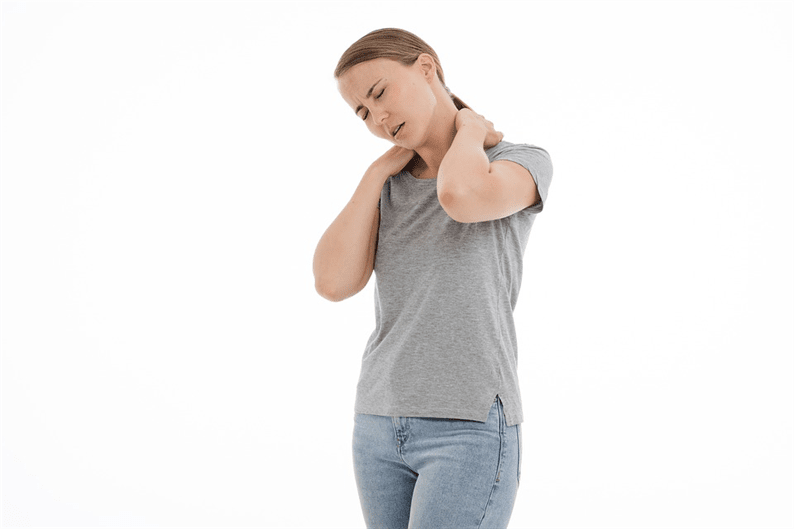
In case of severe pain limiting the mobility of the neck, it is better to seek the advice of a specialist.
Most often they occur with diseases of the cervical spine. Each person has different symptoms, but pain when turning the head is almost always found. There are several of the most common pathologies.
Osteochondrosis of the cervical spine is now more common. This is due to a sedentary lifestyle, unhealthy diet, increased stress on the neck muscles when sitting at the computer. Usually, with osteochondrosis, the neck hurts on the right side or on the left, since it is caused by the pinching of the nerve roots.
Herniated disc or disc protrusion in the cervical spine is common. After all, the muscles that hold the vertebrae in the correct position are weak here, and the load on the neck is always large. Therefore, discs suffer, which become very fragile due to improper nutrition. As a result, the vertebrae come together and infringe on the nerve roots. This, as well as muscle spasms, lead to pain when turning the head.
Arthrosis of the intervertebral joints is less common. Mostly elderly people are susceptible to it, since it is a degenerative-dystrophic process. Often, arthrosis is accompanied by a narrowing of the spinal canal and the appearance of bony growths near the vertebrae. Because of this, some patients cannot move their heads at all.
Scoliosis and stoop are not considered by many to be serious pathologies, but they can also cause pain and stiffness. Due to the incorrect position of the spine, the increased load falls on one side of the neck. As a result, pain appears only on the right or left side.
Other diseases can also cause this condition: vascular disorders, neurological pathologies or infections. The most dangerous of these is meningitis. This is a rather rare disease, but dangerous. In addition to stiffness in the neck, with meningitis, a person has a headache, nausea, weakness, and the temperature may rise. Such diseases include meningococcal infection.
Pain and stiffness in the cervical collar zone can be a symptom of scalene muscle syndrome, cervical sciatica, periarthritis of the shoulder scapula, ankylosing spondylitis, vertebral artery insufficiency, occipital neuralgia. Despite the fact that the manifestations of these diseases may be similar, their treatment should be different, so it is very important to make a correct diagnosis.
Pain in children
This condition, when it is impossible to move the head, occurs even in children. Some babies are born with a pathology such as torticollis. In this case, the child’s head takes a forced position – tilted to one side. This is due to a spasm of the cervical muscles.
Head turning pain can also occur in older children. This is most often caused by infectious diseases. It can be lymphadenitis, mumps, purulent tonsillitis, meningitis. It is very important to recognize the disease in time and begin treatment.
Other reasons
Neck pain on the right or on the left may indicate the following pathologies:
- polio;
- retropharyngeal abscess;
- subarachnoid bleeding;
- lymphadenitis.
Which doctor treats neck pain?
If it hurts to turn your head to the side, a vertebrologist, traumatologist, rheumatologist, oncologist or neurologist can help with the problem. The choice of the attending physician depends on the cause of the pain.
Sometimes it is even required to consult an endocrinologist and an ENT specialist.
Medicines
For neck pain, ointments from the group of non-steroidal anti-inflammatory drugs help. Such drugs are effective:
- Finalgel.
- Nimid.
- Dolgit.
- Fastum gel.
- Diclofenac.
- Nurofen.
They relieve pain and reduce inflammation, can be used for injuries, diseases of the musculoskeletal system, as well as muscle diseases.
If the pain is caused by an uncomfortable sleeping position, analgesics such as Paracetamol are suitable.
With myositis and overexertion, the muscles relax and muscle relaxants relieve spasm. Effective Mefedol, Midocalm, Sibazon. For muscle spasm that is accompanied by severe pain, blockages may be used.
Orthopedic methods
For pain of traumatic origin, wearing a Shants collar is prescribed. It is of two types – hard and soft. In the first case, the cervical spine is completely immobilized, in the second, the collar only supports the neck, and does not fix it in one position.
Infringement of nerve roots
If it hurts to turn your head, then the cause of the discomfort may be hidden in the pinching of the nerve endings. Signs of nerve problems are:
• dizziness;
• numbness of the limbs;
• chest pain;
• the neck hurts strongly and for a long time;
• hearing and sleep disorders.
Often the patient complains that “it hurts to turn my head and cannot tilt it forward”. With such symptoms, you should immediately consult a doctor. Ignoring the problem can lead to the fact that the neck will not be able to fully move and completely lose sensitivity.
For treatment, non-steroidal drugs are used that relieve inflammation and swelling. However, they should be taken with caution – most of them have serious side effects. Such drugs should be taken only as directed by a doctor in prescribed doses. Electromoneurostimulation and magnetotherapy are also very effective. Such physiotherapy procedures not only have a positive effect on the neck muscles and activate blood flow to them, but also strengthen the vertebrae and the cartilage mass between them. The duration of each procedure and their number are prescribed by the attending physician and they are carried out strictly in a medical institution.
Neck injuries and trauma
If the patient says that he “hurts and cannot turn his neck after physical exertion,” this is most likely the consequences of trauma or other physical damage. The reasons for this condition may be an accidental fall, hypothermia, being in a draft, or physical impact on the neck (shock, compression, sharp turn). All these factors cause muscle inflammation and discomfort when it is necessary to turn the neck to the left or right.
The visible manifestations of trauma are:
• the neck hurts a lot if you try to turn or tilt your head;
• swelling and bruising may appear at the site of the injury;
• sometimes the lymph node becomes inflamed;
• the muscle contracts and becomes firm and firm.
If your neck hurts and there are similar symptoms, you urgently need to go to the doctors for help. Only a specialist will determine what type of damage the neck has received, and what treatment will be quick and effective. In most cases, the patient is shown comfortable rest. If lying in bed is painful and uncomfortable, you can use a special orthopedic pillow or neck roll. A warming ointment based on diclofenac will help relieve muscle spasm. Dry heat is also useful, so the neck can be wrapped in a woolen shawl or a down scarf. Simple neck exercises are helpful, but should not be done through “can’t” and “don’t want to.” If your neck hurts, it is better to do a light stroking massage.
Traditional Chinese Medicine Methods
The peculiarity of diagnostics when contacting a specialist in national Chinese medicine is the creation of a comprehensive picture of the condition of any patient based on the following data:
- Inspection. The condition of the skin, hair, nails, tongue is assessed. What matters is the patient’s posture, his manner of movement.
- Interview. The patient will need to answer questions about his lifestyle, relationships with loved ones and colleagues, social activity.
- Palpation. The pulse scenario is necessarily investigated (Chinese doctors distinguish up to 28 scenarios).
- Listening. The timbre of the voice and the rhythm of speech are also important.
Considering that neck pain can have a wide variety of causes, it becomes clear that the creation of a general picture by an experienced physician can be more effective for diagnosis than a sequence of instrumental examinations.
Chinese traditional medicine works with the entire spectrum of diseases of the internal organs and vital systems of the body. It is based on ideas about the system of meridians – the channels along which vital energy runs. If this process is “knocked down” in some place, it leads to diseases of one or more organs. In this case, the doctor needs to address the root cause of the pathology, that is, restore the energy balance in the body. For neck pain, the following methods are most effective:
- Acupuncture. The analgesic and sedative effect of this procedure relieves the patient’s condition during exacerbations. Sterile needles are inserted into biologically active points – the places where the meridians are closest to the surface of the body. Stimulation of points restores the circulation of energy in the body, relieves pain, normalizes the functioning of the nervous system. In modern conditions, a pulsed electric current (electro-acupuncture) helps to enhance the effect of needles.
- Massage. Chinese Tuina massage helps to warm up muscles, relieve muscle spasms, restore blood supply, and release pinched nerves. It has a deep effect on the skin, muscles, ligaments, bones and joints.
- Moxotherapy. This is the heating of bioactive points with mox – a wormwood cigar. It relaxes muscles, relieves pain, and wormwood smoke has a disinfecting and soothing effect.
There is no sense in opposing Chinese and European medicine. A modern doctor practicing in the field of traditional Chinese medicine has the same basic training as a European one, only enhanced by ancient methods, long recognized by the World Health Organization. Therefore, you can come to him with X-ray images and MRI results [4]. If you come with a neglected case, when surgical intervention is already required, you will be referred for hospitalization in a regular hospital, and you can return to Chinese methods of therapy during the rehabilitation period.
Folk recipes
In order to get rid of the pain caused by osteochondrosis, you can prepare an ointment. To do this, add mummy (5 g) to red pepper (1 tbsp) and honey (100 g). Put all the ingredients in a jar and heat for 30 minutes in a water bath, but you cannot bring the mixture to a boil. The resulting product should be stored in the refrigerator.
You need to apply 1 tsp each, rubbing the neck and collar area with this mixture, wrap it with a woolen scarf and leave it for sleep. The use of this remedy contributes to good warming up, relieving pain and inflammation in the vertebrae. The effect may appear in the morning, while turning and tilting the head will be painless.
In order to relieve severe soreness in the neck, you can use a cabbage leaf. To do this, take fresh cabbage, tear off a leaf from it, beat it off until juice appears. Grate finely with laundry soap and put on a broken sheet. Apply with the soapy side to the neck and wrap with foil, bandaging it tightly. You should also insulate the compress with a scarf. By doing such procedures every night at night, you can completely get rid of osteochondrosis.
Another way to deal with neck pain. Pour mustard powder (1 tbsp) into 1 kg of salt (preferably sea salt), pour in 50 ml of water, mix and put on fire. Heat to 50 degrees, make sure that the product does not burn the skin, apply warm to the neck and collar area.
Wrap with polyethylene and wrap with a woolen scarf. Lie until the compress has cooled completely. Then rinse off the product, rub the area with a terry towel. You should not get up right away, you need to stay in bed for another 2 hours. This product can be stored in the refrigerator and warmed before use.
Advice
If pain occurs in the neck area, you need to start taking care of this part of the body more carefully. For example, when leaving the house, it is worth buttoning the collar, since it is the cold air that becomes a frequent reason why the neck muscles become numb.
It is worth observing the posture while sitting. It is better to sit correctly, and this:
- the angle of bend of the legs at the knees should be equal to 90 degrees;
- the back should be flat;
- the head should look straight.
The same rules should be followed when working at a computer. In this case, the monitor should be at eye level. You can not place it higher or lower, as this will cause even more pain.
Even if you sit correctly, you need to periodically get up and walk around the room. Some simple exercises can be done to relieve muscle tension. It is recommended to do such walks once every 30 minutes.
Of course, you can find your own way to get rid of pain. But not all methods are suitable for every person. Treatment should be individualized, so it is best to seek medical attention. He will identify the cause of the pain, prescribe the correct and effective treatment.
What do we do? How to relieve pain?
To begin with, we proceed to special exercises that will help relieve spasm of the cervical muscles.
We add to the exercises wearing a soft, neck collar.
It is easy to use, we rub a warming ointment under the back of the head for 2-3 minutes, put gauze on top, take a plastic material (it can even be a plastic wrap), cotton paper, and then put on a collar.
Neck collar
It is recommended to wear it for 1-2 hours after work, but if after the first hour you feel unpleasant sensations, then you do not need to postpone it!
This collar is worn for about 20-30 days, then it is worth taking a break for 1-2 months.
Muscle stiffness can provoke muscle misalignment, and this, in turn, can cause displacement of the intervertebral joints. With this diagnosis, you will need the help of a chiropractor and the technique indicated above.
Pathological conditions in which unpleasant sensations appear
Other pathologies of the cervical spine are accompanied by pain:
- Subluxation of the cervical vertebra – partial displacement of the body of the cervical vertebra or intervertebral discs due to sudden movements and high stress.
Pathology is accompanied by impaired cerebral circulation, the development of unilateral paralysis of the hand, numbness of the fingers. The patient’s character changes: tearfulness, irritability, absent-mindedness, and a feeling of fear appear. To reduce pain, a person takes a “forced” position, tilts his head slightly to the side or tries to turn his whole body.
Complete dislocation occurs very rarely, only in case of serious injuries, for example, in a car accident.
-
Myositis – inflammation of the neck muscles also affects the shoulder girdle. Infections, hypothermia, stressful situations, and uncomfortable working postures lead to the onset of the disease. The main symptoms are:
- Redness of the neck.
- Swelling and swelling at the site of inflammation.
- Pain on palpation of the neck.
- Severe throbbing, burning pain in the neck, shooting in the face, back of the head, back.
- Restricted neck mobility.
-
Cervical spine cancer. In the early stages, the disease can manifest itself only with general symptoms: a slight increase in temperature (up to 38 degrees), general weakness, decreased performance, loss of appetite, exhaustion. In the later stages, deformation of the vertebrae, intervertebral discs develops, nerve roots can be pinched, from which the neck hurts on the right or left side, depending on the localization of the tumor.
-
Cervical arthritis (osteoarthritis and rheumatoid arthritis) develops due to age-related changes – deformity, degeneration of the cervical vertebrae, the occurrence of bone spurs.
With this disease, patients complain of stabbing pains in the neck, radiating to the occipital region of the head. Symptoms are also noted:
- Crunching, clicking when turning the head.
- Feeling of stiffness in the neck, shoulders.
- Occipital pain.
- Weakness in the neck muscles.
- Convulsions, weakness in the arms.
Sufferers of rheumatoid arthritis feel pain in the morning, discomfort is accompanied by reddening of the neck, swelling of the skin at the site of inflammation.
Important! Do not postpone the visit to the doctor later, pain is a threatening symptom and should be listened to.
Other diseases causing discomfort
The following diseases also cause unpleasant sensations in the cervical spine:
- Inflammation of the lymph nodes: swelling appears, a “lump” on the neck, the temperature rises. A cold, infectious disease can provoke discomfort. One of the possible reasons for the soreness of the lymph nodes located on the back of the neck is cancer of the lymph node.
- Tuberculosis.
- Inflammation of the intestines, diseases of the esophagus.
- Diseases of the heart, lungs – reflected pain.
- Stress, depressive states.
- Infectious brain damage: meningitis, encephalitis, tetanus, osteomyelitis.
Also, pain in the right or left side of the neck may appear after an injury: a bruise of the cervical spine, head, back due to a blow, falling on the back. Post-traumatic pain is characterized by an aching character, sometimes with exacerbations before changing weather conditions.
Why does a child complain of neck pain?
Not only adults note the appearance of discomfort in the cervical spine. What reasons for the development of painful sensations can be noted in young patients?
- Torticollis. It can be diagnosed in both an infant and a patient 10 years old. When this pathology occurs, the child’s head is in a tilted state constantly, the movement causes unpleasant sensations. If untreated, the baby’s facial features become asymmetrical, and sharp pains are noted.
- Infectious mononucleosis. The main symptom of the disease is an increase in the lymph nodes located on the back of the child’s neck and their soreness. Unpleasant sensations are accompanied by swelling of the face, spreading pain throughout the neck.
- Meningitis. With this infectious disease, severe pain in the neck and head is accompanied by a critical increase in body temperature (up to 40 degrees), vomiting, and loss of consciousness.
- Muscle spasm. It can arise from carrying weights, an unsuccessful backpack for textbooks, not observing the correct posture in the classroom at school. Unpleasant sensations are of a different nature: throbbing, aching pains in the neck and head, burning between the shoulder blades, a feeling of heaviness in the arms and shoulders.
Just like in adults, in children, if the neck hurts on the right or left side, it is necessary to exclude the possible occurrence of a cancerous tumor, the development of osteochondrosis.
Folk secrets
It is possible to use a compress and herbal infusions for treatment only after your doctor permits it. You can relieve pain:
- With the help of a decoction of chamomile, peppermint, lemon balm, if discomfort is caused by a stressful situation, a nervous shock.
- Compresses help with osteochondrosis: with grated potatoes, pumpkin, cabbage leaf. They have anti-inflammatory, slight analgesic effects.
- Home-made ointments: based on St. John’s wort, peppermint, pine buds, eucalyptus. The dry herb is crushed, brewed and mixed with butter. The use of the ointment is long-term, up to a month.
- The tincture of the golden mustache helps. It is drunk in courses of 10 days, repeating the reception after a month’s break.
Cervical osteochondrosis as the main cause of back neck pain
Osteochondrosis is a chronic disease of the spine in which vertebrae, intervertebral joints and discs are affected and destroyed. The patient feels pain in the back of the neck, headache, blurred vision.
Very often fingers on hands become numb, coordination of movements may be impaired. These disorders occur in all people with age. But the development of the disease can be accelerated by injuries, impaired posture, excessive physical activity.
There are rules that must be followed to prevent osteochondrosis:
- do not allow excess weight;
- exercise, swimming is especially useful;
- monitor posture;
- use an orthopedic pillow;
- carry the bag on one shoulder.
Protrusion of the intervertebral disc, provoking neck pain
With age, a person deforms the discs of the spine. The discs lose their elasticity, the intervertebral disc protrudes beyond the vertebra. This phenomenon is called protrusion.
The emergence of protrusion is facilitated by:
- sedentary work;
- long stay in a static position;
- improper weight lifting technique;
- poor development of the muscles that support the spine;
- smoking, etc.
- weakening of vision;
- darkening in the eyes;
- headache and dizziness;
- hearing impairment;
- heart palpitations;
- drops in blood pressure.
If left untreated, disc deformation can lead to herniated discs, increased blood pressure, and stroke.
Spondylosis leading to back pain in the neck
Spondylosis is a condition in which bone spines begin to grow on the vertebrae. Often occurs in older people. In addition to neck pain, pain in the eyes, ears, and back of the head may appear. When turning the head, dizziness occurs, weakness and tingling appear in the hands. The causes of the disease can be: poor posture due to sedentary work; the presence of osteoarthritis or osteochondrosis; inflammation of the joints; back injuries of varying severity; hypothermia of the body.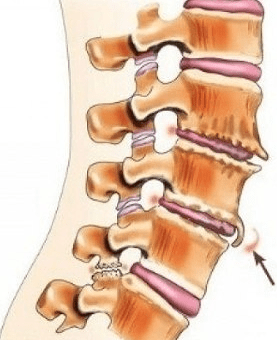
In the advanced stages of this disease, muscle atrophy and spasms may appear. The gait becomes uneven, limbs twitch.
Muscle cramps as a cause of neck pain
In people who are in one position for a long time, the neck, head begins to ache, the pain can go to the arm or shoulder. Perhaps this is a muscle spasm, during which the muscles contract and constrict the nearby vessels.
Such a reaction can occur in the following situations:
- with sudden movements, injuries of the upper spine or head;
- due to stress or lack of vitamins and minerals in the body required for the health of the musculoskeletal system;
- very often the presence of sciatica in a sick person explains why spasms occur, causing severe pain in the back of the neck.
Attention! If the cause of the spasm is a prolonged motionless posture, then simple gymnastics will help. You need to carefully rotate your head in different directions, tilt and turn your head. Blood circulation will help to restore and self-massage.
Dislocation of the cervical vertebrae leading to pain
Why does the neck hurt in the back – the answer to the question is often associated with an incorrect lifestyle, with sedentary work, and the fault of all is the displacement of the vertebrae. Displacement of the cervical vertebrae can occur due to trauma or other diseases of the spine.
Along with pain in the neck with displacement of the vertebrae, there are symptoms such as headaches, the person tends to sleep, the pain from the neck radiates to the chest or collarbone. Sometimes there is nervousness, mood changes often.

Displacement of the vertebrae can lead to injury in an accident, improper lifting technique, falling on the back, pinching of nerves due to narrowing of the spinal canal.
Important to remember! With the timely diagnosis of the displacement of the vertebrae, the deviation is eliminated by undergoing a course of relaxing massage.
Displacement of the cervical vertebrae can lead to hearing loss, strabismus, and a drop in visual acuity. The voice may become hoarse due to ligament damage. Constant compression of the nerves can lead to bursitis, an inflammation of the bursa of the shoulder joint.
Localization of pain syndrome
Often, the pain manifests itself not only in the back of the neck, but also spreads to other parts of the body. Most often, it gives off to the head, shoulders and lower limbs. It depends on the cause leading to its occurrence.
Often, pain in the back of the neck extends to the shoulder area. This happens with significant physical exertion. The intensity is heightened by touch. The site of inflammation becomes denser, a painful lump forms.
Often the symptom is accompanied by headaches. This is due to impaired blood flow in the spinal column (physical inactivity, prolonged stay in an uncomfortable position), pinched nerves, emotional upheaval. The pain radiates to the back of the head when blood circulation is disturbed in the vessels located at the base of the skull. For problems with muscles and the spine, cervical lymphadenitis and other pathologies, such localization is also characteristic.
Often, the pain spreads simultaneously to the occipital region, shoulders, and arms. This occurs during the development of pathological processes in the intervertebral discs, osteochondrosis, injuries, etc.
A painful bump may form on the back of the neck. Pain in the back of the neck associated with the appearance of a seal in this area should alert. The symptom indicates both minor pathologies and serious diseases. Such a bump is:
- lipoma (fat);
- malignant granuloma;
- atheroma;
- fibrolipoma.
The last 2 pathologies are benign neoplasms. They are composed of fibrous and adipose tissue. Such cones, growing, reach enormous sizes. They can extend to the area of the shoulder blades.
Swollen lymph nodes can also trigger this pain. Back pain in the cervical spine can be caused by inflammatory processes in the body. Such symptoms are often combined with hyperthermia (fever). Swollen lymph nodes are caused by:
- low level of immune defense;
- infections in the nasopharynx and other organs located deeper (ARVI, tonsillitis, etc.);
- malignant neoplasms in the lymphatic system;
- lymph node injuries.
In no case should the area of inflammation be warmed up, other self-medication methods should be used. This often leads to serious consequences. It is necessary, without delay, to contact a specialist. This is especially important if the temperature rises frequently, there is no apparent reason for the onset of symptoms, it is very difficult to swallow, and there is no improvement for a long time.
Other concomitant manifestations
In most cases, back pain is only part of the manifestation of another condition. Often, this symptomatology is accompanied by concomitant symptoms. The manifestations of osteochondrosis include: increased blood pressure, a feeling of stiffness in the thoracic region and spine.
The signs of a hernia are the same. There may be a feeling of numbness in the back of the head and hands, fainting, flies before the eyes. Spondylosis is often accompanied by dizziness, nausea, and stabbing pains in the heart.
With cervical myopathy, arms and legs become numb, there are: chills, dysfunctions of the genitourinary system, weakness. Pain in the back of the neck, accompanied by hyperthermia, lethargy, lethargy, headaches and chills, indicates a pharyngeal abscess. This symptom, combined with severe muscle spasms, is a sign of meningitis.
With cervical migraine, pain in the back of the neck radiates to the bridge of the nose, frontal and eye areas. This pathology is often accompanied by visual impairment, dizziness, tinnitus, impaired coordination, and nausea. If blood circulation at the base of the skull is impaired, hearing disorders, nausea, fainting, pallor of the skin, etc., can be added to the pain in the neck.
The symptom in question is a manifestation of a large number of diseases. Do not self-medicate, you need to see a doctor. It is useful to write down all the information about back pain in the neck before going to a specialist: its intensity, localization, accompanying signs, etc. This data will help to diagnose and prescribe the appropriate treatment.
What can you do yourself?
There are general guidelines for back pain in the neck. Compliance with them will help to reduce the intensity of pain, speed up the healing process. It is forbidden to overcool, to be in a draft.
If the neck hurts and burns, it is recommended:
- monitor posture;
- avoid sharp tilts and turns of the head (all movements should be smooth);
- do not sleep on soft mattresses;
- do not use the collar splint for too long;
- avoid unnecessary tension in the neck;
- use an orthopedic pillow for sleep;
- sleep on the side that is on the side of pain;
- perform warm-ups, therapeutic exercises (if there is no doctor’s ban);
- apply analgesic ointments;
- regularly perform smooth head turns in the direction of the lesion (despite the pain);
- include in your daily diet seafood rich in omega-3 fatty acids.
The neck hurts in the back for various reasons. This leads to both sleep in an uncomfortable position and serious illnesses. The symptom manifests itself in different ways. It differs in intensity and localization. Neck pain is often accompanied by other symptoms.
Pathology treatment
Only an experienced doctor should treat back pain in the neck. In no case should you take measures to eliminate pain, regardless of localization (right or left). Before starting treatment, the doctor will prescribe the following:
- Radiography.
- General blood test.
- Magnetic resonance imaging.
- Ultrasound examination.
Diagnosing pathology is an important step in identifying the underlying disease. After all, the elimination of pain in the back of the neck with the help of painkillers is a way only to improve the condition, and not for a long time, and not to eliminate the main cause.
In order to minimize pain in the back of the neck above the spine, on the right or on the left side, the following is prescribed:
- therapeutic massage
- remedial gymnastics
- physiotherapy
- manual therapy.
All of the above methods of treatment are prescribed as additional ones, and are recommended for use only after the removal of intense pain.
In addition, the use of NSAIDs is prescribed – Rofecoxib, Piroxicam, Nimesulide, Ibuprofen, Diclofenac. In order to relieve pain, pain relievers are prescribed – Arkoksia, Meloxicam, Lornoxicam, and in order to eliminate muscle spasm, muscle relaxants are prescribed – Tizanidine, Midocalm, Baclofen.
Drug therapy is selected purely individually, depending on the factor that provoked the pain in the back of the neck, and the severity of the condition.
The use of physiotherapy exercises
For the treatment of cervical osteochondrosis, it is recommended to do special exercise therapy exercises. Gymnastics will help to strengthen the muscles of the spine, increase their elasticity, as well as improve blood circulation in the joints and muscles.
- Sit on a chair, straighten your neck and back. Smoothly turn your head first to the right (to the extreme position), and then to the left. Repeat the exercise five times.
- Sit on a chair, lower your head down and try to touch your chin to your chest. You need to do the exercise ten times.
- Sitting on a chair with your back straight, you need to lean one elbow on the table. The palm of this hand must be applied to the temporal region and the head and tilt the head down, but at the same time resist it with the hand. Next, do the same with the other hand. Repeat five times.
- Stand up, straighten your back, stretch your arms along your torso. Raise your shoulders, fix the position for ten seconds. Relax, exhale. Repeat ten times.
Why does the neck hurt from behind?
The back neck can hurt due to overwork, especially after being in a static position for a long time. If the pain does not appear for the first time, constantly worries, accompanied by other symptoms, then you need to see a doctor. Such signs indicate injury or illness.
Subluxation of the cervical vertebra
Such an injury involves a partial displacement of the articular surfaces of the cervical vertebrae in relation to each other. Pathology is accompanied by pain, which increases sharply when trying to move.
Other signs are characteristic of trauma:
- forced finding the head in one position;
- pain on palpation;
- muscle tension;
- swelling of soft tissues;
- possible headache, dizziness, sleep problems, cramps in the upper limbs.
What’s at the back of the neck?
The back of the neck contains many nerve, bone and muscle formations, all of which can be damaged. In order to understand the causes and mechanisms of pain, it is necessary to know the anatomical and physiological characteristics of this area.
In the back of the neck are located:
- spinal column;
- neck muscles;
- nerves of the neck;
- blood vessels.
Vertebral column
The spine is a complex of bones (vertebrae) that are connected to each other by joints and ligaments. The human vertebral column includes 33 – 34 vertebrae, of which 7 belong to the cervical region, 12 to the thoracic region, 5 each to the lumbar and sacral, and 3 – 5 to the coccygeal.
The cervical spine is the most mobile and, at the same time, the least durable part of the spine, which is due to relatively small loads on the vertebrae and poorly developed muscles. Particular attention should be paid to the first two cervical vertebrae, since their structure is different from the rest.
The first cervical vertebra (atlas) is conventionally ring-shaped. Through the articular surfaces, it attaches to the large occipital foramen of the skull, from which the spinal cord emerges (the spinal cord is a collection of nerve cell processes that begin in the brain and control the activity of the whole organism). The second cervical vertebra (axis) differs in that on its upper surface there is a bony process (“tooth”), to which the atlas is attached and around which rotates, providing rotation of the human head.
The remaining 5 vertebrae of the cervical spine have a similar structure, in which they are distinguished:
- Vertebral body. The vertebral bodies are located one above the other and perform a supporting function. They are connected to each other with the help of intervertebral discs, represented by fibrocartilaginous tissue. The intervertebral discs perform a protective function, reducing stress and preventing damage to the vertebrae during running, jumping and striking, and also provide some mobility of the vertebrae relative to each other (that is, they provide mobility of the cervical spine).
- The arch of the vertebra. The arch is located behind the body and is formed as a result of the fusion of the bone processes of the vertebrae. The body, together with the arch, forms a closed ring (vertebral foramen). The vertebral foramen of all vertebrae are located one above the other, forming the so-called vertebral canal, in which the spinal cord is located.
- Pointed processes. They are lateral bony outgrowths, to which ribs are attached in the thoracic spine. A feature of the transverse processes in the cervical spine is the presence of holes in them through which the vertebral artery passes, providing blood supply to the brain.
- Articular processes. Each vertebra has 2 upper and 2 lower articular processes. The lower articular processes of the superior vertebra are connected (form joints) with the upper articular processes of the lower vertebra, providing fixation of the spinal column. It is important that a small space (intervertebral foramen) remains between the articular processes of the two vertebrae, through which the spinal nerves (processes of nerve cells located in the spinal cord) exit from the spinal canal. They merge with each other and form nerve plexuses that innervate various organs and tissues.
- Spinous process. This term refers to a bony outgrowth located at the back of most vertebrae. The spinous processes of the first 6 cervical vertebrae are poorly developed and not prominent. The spinous process of the 7th cervical vertebra is well developed, so it can be easily felt (it corresponds to the first clearly defined bony protrusion in the back of the neck).
Neck nerves
As mentioned earlier, a spinal nerve exits through each intervertebral foramen. The cervical spinal nerves fuse together to form the cervical plexus.
The branches of the cervical plexus include:
- Motor nerves – nerve fibers that innervate the muscles of the neck (including the trapezius muscle), allowing them to contract voluntarily.
- Sensory nerves – nerve fibers that branch out in the skin of the neck and provide sensitivity to the area.
- The phrenic nerve – descends into the chest and innervates the diaphragm (the main respiratory muscle).
Neck blood vessels
Disruption of blood flow to the neck can lead to tissue death, which can lead to severe pain.
The blood supply to the muscles and organs of the neck is carried out:
- Vertebral artery. As mentioned earlier, the vertebral artery passes through the openings of the transverse processes of the cervical vertebrae, after which it enters the cranial cavity and participates in the blood supply to the brain. In the cervical region, a number of smaller branches depart from it, which pass through the intervertebral foramen and supply blood to the spinal cord.
- External carotid artery. Its branches supply blood to the superficial and deep muscles of the neck.
- Transverse neck artery. It supplies blood to the trapezius and some other muscles in this area.
The outflow of venous blood from the tissues of the neck is carried out through the superficial and deep veins. Near the veins are also located lymphatic vessels and lymph nodes of the neck, which perform a protective function.
Why does the neck and back of the head hurt?
Neck and occiput pain can be caused by damage to the spinal nerves, cervical plexus, and muscles in the cervical region.
The cause of pain in the neck and back of the head can be:
- osteochondrosis of the cervical spine;
- myositis (muscle inflammation
- muscle spasm;
- neuralgia of the occipital nerve;
- injury to the cervical spine;
- swelling in the neck;
- mental and physical stress.
Osteochondrosis of the cervical spine
This disease is a lesion of the intervertebral discs with their subsequent deformation. Intervertebral hernias are formed, which squeeze the nerve roots, causing painful sensations. In the later stages of osteochondrosis, displacement of the discs and vertebrae occurs, which leads to deformation of the cervical spine. As a result of spinal deformity, the vertebral artery is compressed and cerebral circulation is disrupted, which leads to pain in the occipital region of the head.
The cause of osteochondrosis of the cervical spine can be:
- stress
- posture disorder
- overweight
- metabolic disease;
- hard physical labor;
- injuries of the cervical spine;
- sedentary lifestyle;
- hormonal disorders (menopause).
Myositis
When muscle tissue is inflamed, pain occurs in the neck and back of the head. In the process of inflammation, muscle fibers swell, squeezing the nerve endings of the cervical region. The process involves the tendons of the neck muscles, which attach to the occipital bone. This is due to the localization of pain.
With a prolonged course and the absence of treatment, the muscles of the larynx, esophagus and pharynx can be involved in the inflammation process, which can lead to impaired swallowing and shortness of breath.
The cause of myositis can be:
- infectious diseases (tonsillitis, flu
- drafts;
- great physical activity;
- prolonged stay in one position;
- injury.
Occipital neuralgia An
inflammatory disease characterized by paroxysmal pain in the occipital region of the head. Also, pain is given to the neck, back and ear. Pain sensations are sharply increased when turning the head, coughing, sneezing, nodding. As a result, the patient tries to restrict any movement in the cervical spine, which can lead to muscle spasms in the back of the neck. This leads to a deterioration in the patient’s condition and the emergence of new pain.
Muscle spasm
It arises as a result of a long stay of a person in one position. More often observed in people leading a sedentary lifestyle (programmers, drivers, office workers). Manifested by aching or shooting pains in the back of the neck and back of the head, worse when trying to turn or bend the head.
Injuries of the cervical
spine It is possible to injure the cervical spine as a result of an accident, falling from a height, or receiving blows to the neck area. Allocate sports injuries that arise as a result of insufficient physical fitness when performing sports exercises or improper performance of these exercises.
Often the pain is acute, occurs at the time of injury or the first hours after it. If you experience pain in the neck and occiput as a result of an injury, you should urgently seek medical attention. Injuries can damage the muscles of the neck and cervical spine. This can lead to spinal cord injury and disability.
Tumors in the neck area
Neoplasms in the neck area cause compression of the surrounding structures. This can compress the nerves of the cervical plexus, spinal nerves and vertebral artery, which can lead to pain in the neck and back of the head.
Mental and physical stress
As a result of overstrain, a spasm of the vessels and muscles of the back of the neck occurs, which leads to compression of the nerve endings. Violation of blood circulation in the muscles leads to a slowdown in the process of their relaxation and the formation of lactic acid, which has an irritating effect on the nerve endings. This is how pain in the neck occurs. Spasm and squeezing of the muscles of the vertebral artery leads to impaired cerebral circulation, which causes pain in the back of the head.
How to treat diseases of the cervical spine
Treatment of the cervical spine is complex and lengthy, it implies a set of procedures and medical prescriptions. Usually this is drug therapy, with exercise therapy exercises, reflexology, massages, physiotherapy, in advanced cases, surgery is indicated.
Treatment of the cervical spine aims to relieve pain, restore mobility and sensitivity by restoring the functions of the vertebrae, stimulating blood flow in the cervical spine, improving the quality of sleep and life in general, and preventing relapse.
Common treatments are as follows:
- Acupuncture is a method of oriental medicine that has proven its effectiveness over thousands of years of existence. By stimulating biologically active points onto which the systems and organs of a person are projected, acupuncture treatment of the cervical spine relieves pain, swelling, relaxes muscles, restores motor activity and sensitivity.
- Acupressure massage is another method of affecting the active points of the body by massage with knuckles or fingertips. This massage relieves muscle spasms, stimulates blood circulation and metabolism in the affected area, removes puffiness and other signs of inflammation.
- Manual therapy – treatment through manual massage and its varieties. Treatment of the cervical spine with manual massage helps to relieve tension from the vertebrae of the neck, eliminate the clamping of the nerve roots, through smooth stretching returns the vertebrae to a physiological position, which improves blood flow, relieves muscle spasm and activates motor activity.
- Cupping massage is a type of massage performed by medical banks, creating a zone of negative pressure in the affected area. The effect is achieved due to the rush of blood, improving metabolic processes, relieving blood stasis and spasm of the cervical muscles. It is not carried out directly over the vertebrae themselves, only in the adjacent area.
- Hirudotherapy – treatment with leeches, the saliva of which contains active substances that improve blood flow, with the elimination of lymph and blood stagnation in the cervical region and the normalization of blood pressure.
- Moxibustion is a type of treatment with the effect of heat on the active points of the body; in diseases of the spine, the effect goes along the points along the spinal column. The method effectively restores blood circulation, stimulates the regeneration of cartilage and bone tissue, and improves metabolism.
- Physiotherapy involves performing a set of exercises under the supervision of an instructor in order to relieve muscle spasm, gently stretch the vertebrae and restore physiological activity in the cervical spine.
- Physiotherapy – exposure of the affected area to natural factors, in particular, heat, ultrasound, electric current, etc.
Treatment of the cervical spine involves the participation of specialists, after appropriate diagnostics. At home, you can act on the cervical spine with self-massage, subject to the following conditions:
- The impact should be smooth, without the application of force
- The massage is carried out with the fingers
- Movements go from the spinal column along the back
Usually, this home massage is done by kneading, rubbing, stroking movements of the neck, back of the head, head, in a sitting position, to relieve headaches and neck pain, eliminate muscle spasms. For a complete cure of the pathology of the cervical spine, home massage is not enough.
As a prevention of relapses, the recommendations of specialists should be followed, not to load the spine, observe posture, perform prescribed therapeutic exercises, and resolve the issue of excess weight.
Technological advances in the 21st century have led to the fact that the majority of the population of developed countries spends their working day in a sitting position. Our physical activity has decreased to almost a minimum, and the amount of daily stress has increased, in all likelihood, to a maximum. This situation negatively affects our health and, first of all, the condition of the spine. There are countless people with back problems, but even more people complain of constant or recurrent neck pain. Its causes can be very diverse, and their prevalence is associated with the structural features of the cervical spine itself.
This part of the body consists of seven fairly thin vertebrae. Of all parts of the spine: lumbar, thoracic and cervical – the latter is the least massive, but the most mobile: its function is to ensure unhindered head turns. A constant and significant load on the neck determines the frequency of pain syndrome.
Pain in the neck in medicine is called the term “cervicalgia”. This sign can signal the development of various ailments, so the first thing to do to a person who is worried about a sharp pain in the neck is to see a doctor. A specialist, comparing other symptoms, having studied the necessary tests and anamnesis of the disease, will diagnose.
Causes of neck pain
Osteochondrosis
With this pathology, the connections between the joints of the spine are disrupted, disc protrusion occurs and hernias are formed. The condition occurs in those who have a hereditary predisposition, do not monitor posture, nutrition and lifestyle. In addition to the fact that the neck hurts, the person feels general weakness and tinnitus. Fainting and impaired consciousness occur. Soreness can occur in the arms, back of the head, and the area between the shoulder blades. Joints may emit a crunch when the head is turned, and numbness is felt.
The pain in this disease is chronic and aching. It can become so intense that it becomes difficult to fall asleep. In the early stages, the process can be easily corrected, but the further the pathology progresses, the more difficult it is to correct it.
Osteoarthritis of the cervical spine
The disease has a destructive character – intervertebral joints are destroyed, their structure is disrupted and bone tissue overgrowth occurs. The neck can hurt on one side, the pain also radiates to the upper limb, chest.
Infringement of blood vessels and nerve endings leads to hearing and vision impairments, a person gets more tired, feels memory loss and absent-mindedness. Lack of effective treatment can lead to complications and disability.
Herniated discs
Pathology begins with a bulging disc content, and then – going beyond its normal anatomical position. Even a slight displacement can manifest itself as a pronounced symptom. The spinal canal is narrow and all nerve roots are in close proximity to each other. As soon as a hernia begins to appear, the neck and back hurt. If the patient tries to relieve pain with ordinary pain relievers, the symptom goes away, but the problem remains and, over time, reminds of itself again.
Stretching the neck muscles
Almost everyone has encountered this problem – prolonged tension of the cervical spine or intense training after a while is reflected in severe pain in the muscles. The pain occurs acutely, often begins to bother after sleep. there is swelling and swelling on the damaged side of the neck. Turning the head is difficult, the patient tries to give his head the most comfortable position so as not to feel pain. The pain will go away on its own, you just need to give rest to the damaged area. to alleviate the situation, consult your doctor: he may advise a compress or ointment with an analgesic.
Spondylosis
The disease is a complication of osteochondrosis, which could not be treated. The disease is serious and can lead to limitation of a person’s physical activity. In addition to osteochondrosis, spondylosis can cause injury. The patient feels pain constantly, it can go to the back of the head and collar area. Sometimes, the neck hurts throbbing, accompanied by stiffness and impaired turning of the head.
To eliminate the disease, complex treatment is required, which combines the effect on the cause and individual symptoms of the disease.
Cervical myelopathy
The patient’s neck hurts in this case due to the narrowing of the spinal canal. In order to recognize the pathology in time, it is necessary to pay attention to the following symptoms: the patient feels weakness, numbness and tingling in the limbs. The condition is accompanied by impaired speech, coordination and balance. The gait becomes wobbly, the position of the body in space is disturbed. If, in recent times, injuries, falls, road accidents have been observed – most likely this is myelopathy.
Whiplash injury
In this case, the neck hurts as a result of soft tissue damage. The mechanism of occurrence is strong flexion and subsequent extension. The patient usually feels pain after falling or fighting. Trauma can be recognized by this sign: the head protrudes somewhat forward and the physiological bends of the cervical spine are disturbed.
Injury
The causes of injury are impacts, accidents, unsuccessful dives. The patient feels aching pain in the neck and back of the head. Motor activity is severely limited, soft tissues swell, hematomas and bruises appear.
Infectious diseases
The inflammatory response, which is the response to an infectious disease, results in acute pain. The mechanism of development is an increase in lymph nodes. lymphatic vessels, which press on the muscles and lead to their spasm. This condition is observed with angina, rubella.
An infectious disease for which neck pain is the leading symptom is meningitis. Pathology is accompanied by tension in the muscles of the occiput, the patient cannot bend his head and it is in an unnaturally extended position.
Diseases of the internal organs
Certain conditions of the internal organs can lead to the radiation of pain in the neck. This is facilitated by the peculiarities of innervation and reflex mechanisms. So, pain in the gallbladder, esophagus, heart can radiate to the neck. Also, soreness is observed with pathologies of the thyroid gland, larynx, pharynx.
Some of the pathologies can be normal and are easy to treat. But, sometimes, the neck hurts with serious pathologies that require urgent help.
Other reasons
The neck may hurt after the patient has been in a draft or very cold. This leads to muscle spasm, which is accompanied by pain. It also happens that a person just “lay down” when he slept in an uncomfortable position.This symptom may also occur after prolonged work, stress or intense training.
There are a lot of reasons for pain in the neck
Do you have head and neck pain? This could be:
- cervical osteochondrosis;
- herniated disc;
- muscle spasm with pressure of the vertebral artery;
- neuralgia of the occipital nerve;
- neck injury.
If the neck and shoulder or arm immediately hurt, this may signal:
- cervical osteochondrosis;
- muscle spasm;
- intervertebral hernia.
With a herniated disc, pain in the cervical spine:
- occur after physical exertion;
- neck injury or awkward movement;
- May be exacerbated by coughing, runny nose, turning the neck, tilting or rotating the head;
- can spread from the neck to the back of the head, shoulder blade, shoulder, or arm.
Pain caused by muscle spasm spreads to the arm or shoulder, eye area, back.
With cervical osteochondrosis, neuralgia of the occipital nerve, injury to the cervical spine, pain extends to the back of the head or forehead and temples. They can be on the left or right side of the neck. Neck pains are aggravated by moving the head or being in an uncomfortable position for a long time. They can also be accompanied by dizziness.
When the vertebral artery is compressed, neck pain is combined with a unilateral headache. In this case, head pain is accompanied by sweating of the face, ringing in the ears, and dizziness. Such sensations can develop against the background of latent depression and anxiety.
If the neck hurts due to an infection or tumor, the pain constantly increases and does not go away after sleeping, resting, or taking medications. In addition, such pains are accompanied by weight loss, fever, changes in the blood test (a decrease in the level of hemoglobin and erythrocytes, an increase in the level of leukocytes).
Various diseases of the joints of the spine (Forestier disease, ankylosing spondylitis) mainly affect the strong half after 30 years. They are accompanied not only by neck pain, but also by a decrease in the mobility of the spine.
If the ear and neck hurt, this may indicate:
- inflammation of the tendon of the long neck muscle;
- Eagle syndrome;
- thyroid disease.
With inflammation of the tendon of the long muscle of the neck, the front of the neck hurts. Pain is accompanied by difficulty in swallowing food, saliva.
Do you have a sore throat and neck? This could be a sign of styloid syndrome (Eagle syndrome). In this case, the pain spreads to the ear. The disease is accompanied by a systematic sore throat. Neck pain that spreads to the ear, back of the head, lower jaw can be caused by damage to the thyroid gland.
… Tennis ball massage
What to do:
- Take a tennis ball and start massaging the base of the skull in different directions.
- If you feel a seal, press the ball harder on this place and hold for 20-30 seconds, then release and continue to massage.
The structure and function of the cervical spine
The cervical spine is the upper part of the spine that performs significant stress on a daily basis. It consists of seven vertebrae, connected by movable or inactive (between the first segments) joints. The spinal cord is located in the lumen of the spinal canal, and at the level of each of the vertebrae, the spinal nerves branch off from it. They are involved in the innervation of the skin, muscles and internal organs of a person.
The muscles of the neck regulate the movements of the head and keep it in the anatomically correct position, and also take part in the processes of chewing and swallowing. They are attached to the bones through tendons – strong connective tissue cords. Ligaments fix the vertebrae and control their amplitude. Neck pain can be triggered by pathologies of any of these components.
Neck structure
The neck includes:
- cervical spine,
- muscles,
- ligaments,
- larynx,
- thyroid.
There are seven vertebrae in the cervical spine. Compared to the rest of the spine, the cervical vertebrae are not large. Consist, like everyone else, of the body and processes with attaching muscles and ligaments.
Between the vertebrae there are discs with the outer hard part, consisting of fibrous fibers, and the inner, soft nucleus pulposus, which provides the spine with shock absorption.
External remedies for severe pain of the cervical spine
To relieve neck pain with cervical osteochondrosis or other diseases, local therapy will not be superfluous – the use of various rubbing and compresses. For rubbing, warming ointments can be used:
- Finalgon,
- Capsicam,
- Apizartron with bee venom,
- Vipratox and Viprosal – with a snake.
After using these rubbers, wrap your neck with a warm handkerchief, avoid water ingress.
“Cooling” drugs – Menovazin and DIP Relief also have a good effect, which, due to the content of ibuprofen and cooling levomenthol, has a complex effect.
Plasters – Nanoplast forte and Zb Pain Relief, which contain exclusively natural substances, also have an analgesic effect.
Combined ointments Heparin and Dolobene relieve pain and increase metabolism in the damaged part.
For compresses, ready-made preparations are used – pure Medical bile.
Dimexide with Novocaine has a good effect in a ratio of 3 to 5.
The use of vasodilators (Papaverine, Drotaverin, Euphyllin) can eliminate the “vertebral artery syndrome”.
Sedatives – any available: Valerian, Motherwort, Afobazol, Corvalol.
Worn joints
Like other joints in the body, cervical joints wear out with age. The spacers between them – elastic cartilage that provide the necessary shock absorption under stress and soft turns – become thinner, and sometimes even completely collapse.
Due to thinning cartilage, the joints rub against one another during movement. This causes stiffness and soreness.
How to get rid of neck pain at home
If the pain is minor, try the following treatments:
- Apply a cold compress to the affected area for the first couple of days. Use a hot compress or hot shower immediately afterwards;
- Take over-the-counter pain relievers such as ibuprofen and acetaminophen;
- For a few days, stop playing sports, lifting weights, and activities that make the painful sensations worse. As your symptoms decrease, gradually return to your normal activity level;
- Do neck exercises every day. Pull your head slowly from side to side, from top to bottom;
- Watch your posture;
- During a call, do not pinch the phone between your neck and shoulder;
- Change your body position more often. Do not sit or stand still for too long;
- Massage your neck gently;
- Use a special neck pillow during sleep;
- Do not wear a neck brace without consulting a professional. Using it improperly can worsen symptoms.
Be careful in your sleep
If you are often worried about pain in the cervical spine, then you should be more careful about the conditions and in what position you sleep. Try to sleep only on your side or on your back – never sleep on your stomach.
When you sleep on your stomach, you turn your head to one side or the other and your neck stiffens for several hours in an unusual position. Such a dream can negatively affect the condition of the lower back, because in the absence of proper support, the stomach “falls” down.
For minor pain, in addition to exercise, follow these guidelines:
- Apply a cold or hot compress to the affected area. Use ice for the first 48-72 hours, then switch to hot compresses. Do not use the compress while sleeping, as this can lead to injury.
- Take over-the-counter pain relievers such as ibuprofen and acetaminophen;
- Continue to move, but eliminate those movements that increase the pain. This will help reduce symptoms and inflammation.
- Massage your neck lightly.
- Try sleeping on a firm mattress without a pillow or on a special neck pillow.
- Ask your doctor if you need a neck brace. Do not wear the bandage for too long as it can weaken the muscles.
Sources used and useful links on the topic: https://econet.ru/articles/pochemu-bolit-sheya-5-prichin https://gorodzdorovia.ru/bol-v-shee/ https://spina.guru/diagnostika / boli-shee https://www.KrasotaiMedicina.ru/symptom/neck-pain https://cska-tir.ru/bolit-sheja-bolno-povorachivat-golovu-chto-delat-lechenie/ https: // medspina .ru / pozvonochnik / bolno-povorachivat-sheyu.html https://nervy-expert.ru/golovnye-boli/bolit-sheya/bolit-sheya-pri-povorote-golovy/ https://netbolezni.net/nevrologiya/ 716-chto-delat-esli-zaklinilo-sheyu-i-bolno-povorachivat.html https://stom46.ru/pozvonochnik/bolno-povorachivat-sheyu-v-levuyu-storonu.html https://sustavik.com/ lechenie / bol-shee-povorote-golovy https://vertebrolog.pro/boli-v-shee/pri-povorote-golovy.html https://zen.yandex.ru/media/vesnik/chto-delat-esli-bolit-sheia-i-nevozmojno-povernut-golovu-5978f4c41410c324182acb28 https://aif.ru/boostbook/bol-v-shee.html https://tutbolinet.ru/sheya/chto-delat-bolit-sheya.html https://zen.yandex.ru/media/zdorovie_s_uduvulstviev/bolit-sheia-effektivnyi-metod-lecheniia-doma-vidy-bolei-5d9d92da2fda8600b153097e https://BolitGolova.info/golovnaya-bol/bolit-sheya-szadi.html https://healthperfect.ru/prichiny-bolevyx-oshhushhenij-shee-szadi-vozmozhnye-zabolevaniya-problemy-zdorovem.html https://spina-health.com/bolit-sheya-szadi/ https://sustavlive.ru/boli/pozvonochnik/bolit-sheya-szadi.html https://sustavy.expert/boli/sheynyy-otdel/bolit-sheya-szadi/ https://www.polismed.com/articles-bolit-sheja-prichiny-bolejj-chto-delat-pri-ehtikh-boljakh.html https://naran.ru/simptomy/bol-v-sheynom-otdele/ https://artosustav.ru/boli/sheya/ https://nebolit-ok.ru/bolit-sheya/ https://www.adme.ru/svoboda-sdelaj-sam/7-effektivnyh-sposobov-izbavitsya-ot-boli-v-shee-1952215/ https://zen.yandex.ru/media/kim/bol-v-shee-vse-o-prichinah-metodah-diagnostiki-i-sovremennom-lechenii-5df767ebe4fff000add60b44 https://medprior.ru/kak-snjat-bol-naprjazhenie-shee/ https://Lifehacker.ru/bolit-sheya/ https://FitZdrav.com/zdorove/chto-delat-pri-boli-v-shee.html

